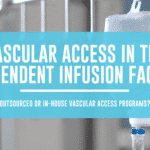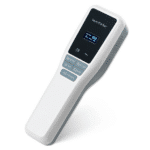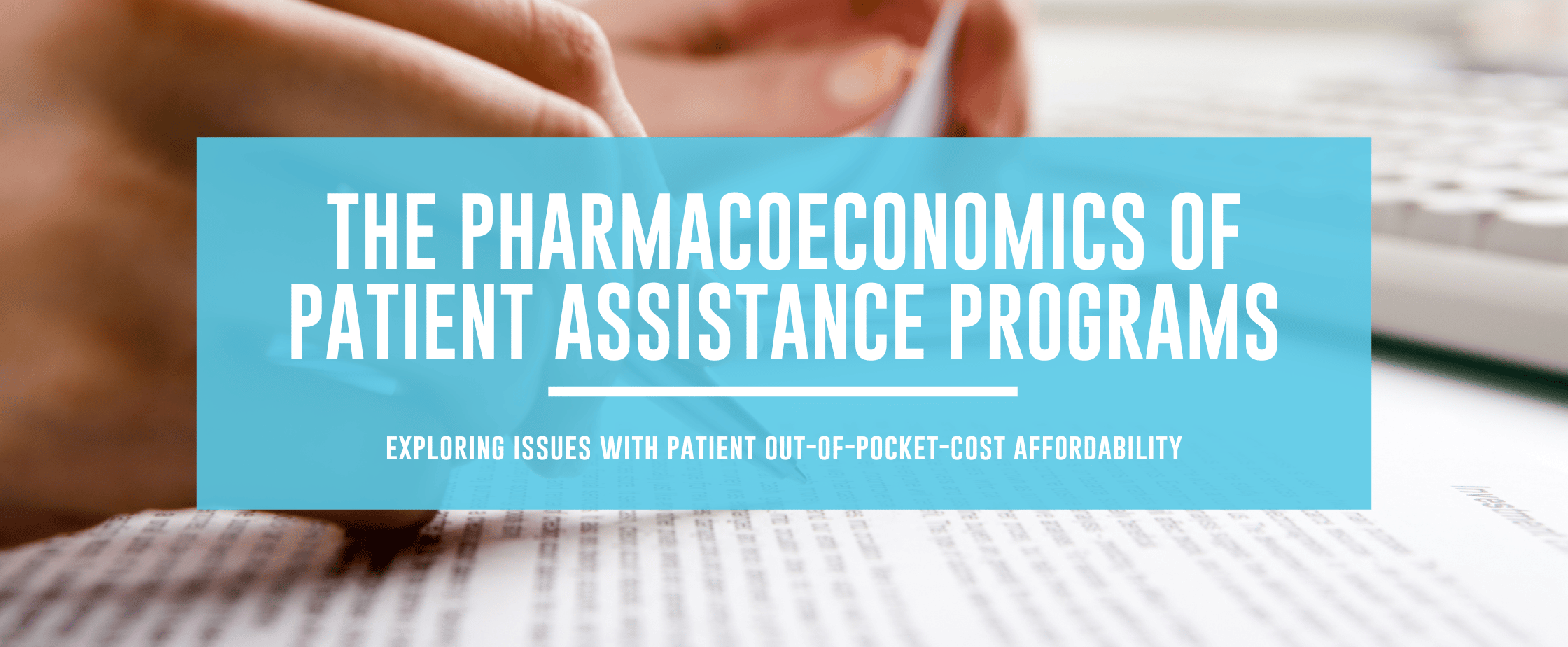Sometimes, even seasoned healthcare professionals get hung up on the intricacies of the pharmacoeconomics of patient assistance programs. If you’re looking to brush up on the issues associated with patient out-of-pocket cost affordability, look no further.
We’ll start with some basics. “Patient Financial Assistance Programs” (PAP) are programs which may be offered by drug manufacturers, non-profit patient support foundations, Pharmacies, and other organizations.
Insurance is a fundamental part of the health care delivery system, and many patients know all too well that they are frequently denied access to the therapies they need because of a lack of insurance, lack of payor authorization, or lack of ability to pay their out-of-pocket costs (OOP). In 2022, millions of working-age adults and children went without prescription drugs because of cost concerns. Unfortunately, with millions of Americans still uninsured and 14 percent of our population living below the poverty line, the problem has become more pervasive.
We all know patients whose families have been affected by job loss, lost insurance, changes in benefits, large out-of-pocket expenses, or some combination thereof. These factors work together to increase the patient’s financial responsibility while decreasing his or her ability to pay for care. With the double whammy of COVID-19 and significant inflation this issue promises to persist. That leaves patients scrambling to find ways to pay for their OOP costs.
Before we get into the nitty gritty of this issue, it is important to mention the negative impact of not taking your medication as it was prescribed by your doctor. Patient compliance with their medication regimen has a direct effect on clinical outcomes. Non-adherence to essential medications results in greater morbidity (i.e., disease progression, disease complications, reduced functional abilities, a lower quality of life) and mortality. In the U.S., medication non-compliance has been estimated to result in avoidable hospitalizations that cost the system more than $100 billion each year and may approach $300 billion in total direct costs.
Recently, it has been reported that one-third to one-half of all U.S. patients fail to comply with their prescribed pharmacotherapy regimens. Financial concerns are pushing patients to new levels of non-compliance—essentially, they are being forced to choose between medications and other staples of life. Patients who do not comply with medication regimens—or do not seek treatment or follow up with physician orders–are at risk of exacerbating their conditions. For chronic conditions that are controlled by medication, the symptoms of the illness will likely return, and the underlying disease may likely progress. This results in an increased need for care—be it physician visits, emergency room visits, or hospitalizations.
The urgency becomes greater when you consider the devastating effects of the past few years on the number of uninsured, as this group is more than twice as likely to delay or forgo needed care. This contributes to the spiral of more patients seeking treatment in the high-cost acute care setting, marked by surging numbers of ER visits, increased hospital admissions, and increased length of stay.
Patient assistance programs (PAPs) offer patients new avenues for accessing their prescribed medications which may lead to higher levels of affordability and thus compliance. PAPs are not mandated or managed by the government; they are voluntary programs offered by pharmaceutical companies, non-profit foundations, and some infusion and specialty pharmacies. Because they are subject to state and federal regulatory control, PAPs can vary in their structure, patients served, services offered, and end results. Their decentralized nature makes them cumbersome and time-consuming to navigate.
Often, the amount of assistance and method by which it reaches the patient depends on the payer, benefit model, and regulatory guidelines. For example, uninsured patients who qualify can typically receive drugs or coupons/cards used toward the purchase of drugs through a manufacturer program. But the rules change when the payer is a government-funded program, such as Medicare or Medicaid, because direct benefit to the patient from the pharmaceutical company could be considered an inducement to use the drug in question.
Product life cycle and the specifics surrounding each individual therapy come into play as well. For example, as a drug approaches the end of patent protection, the PAP guidelines may become more generous, allowing the manufacturer to build brand loyalty and maximize market share before competing therapies become available and or their product becomes available as a generic drug.
Clearly the landscape of PAPs is multifaceted, and a bit like peeling an onion—the further you go, the more there is. While this evaluation is not intended to tell you everything you need to know about PAPs, it provides a brief overview that can help reduce the learning curve for patients looking for patient assistance funding.
Pharmaceutical Manufacturer Programs
Nearly all of the major drug manufacturers provide assistance programs for their most popular drugs. Currently, there are about 2,000 PAPs offered by nearly 500 companies. This loose patchwork of programs lacks any semblance of standardization and is subject to continuous change. Each unique program has its own eligibility guidelines and application procedures. Patient assistance can range from discounts on drug purchases to free medication.
Eligibility requirements vary from program to program, but most require U.S. citizenship and depending on the PAP, the patient may be required to submit supporting documentation, such as proof of income, rejection letters from commercial insurance plans and/or Medicaid, original prescriptions, or physician signatures and clinical information. Some of the manufacturer PAPs send the medicines to the physician’s office for distribution to patients, while others send the medicine to a pharmacy or provide a credit card with a predefined value that the patient can use to pay their out-of-pocket costs. A few send a certificate to the patient who then gives it to the pharmacist.
Most of the programs offer an online application process. They can be found individually at the drug company’s website or can be accessed through one of the handful of national organizations that act as clearinghouses for patients. These “one-stop-shops” allow patients to locate programs by drug and/or manufacturer, see consolidated program information, and receive refill updates and other information (see Exhibit 1). Most of these sites also offer access to information on relevant insurance coverage and public benefits that might address other health care needs. Many of these sites offer a variety of resources to health care providers, which can be very useful for those just beginning the patient advocacy process.
Exhibit 1: Patient Assistance Program Gateways
- Partnership for Prescription Assistance (PPA) @ www.pparx.org
- Patientassistance.com @ www.patientassistance.com
- RxAssist @ www.rxassist.org
- NeedyMeds @ www.needymeds.org
- Medmonk @ Medmonk.com
These programs are by far the most common vehicle for delivering patient assistance—and have helped millions of Americans obtain needed medication—but there are few programs for injectable or infused medications compared to oral medications. There are even fewer programs dedicated to chronically infused medications. Despite these drawbacks, manufacturer PAPs can be a useful tool. One item of special note is that the drug company BPL who makes Gammaplex 10% IVIG has a patient assistance program that is not diagnosis dependent which can be utilized by patients with any diagnosis. This program is available via the Medmonk website.
Third-Party Programs
For those insured by government sponsored programs, such as Medicare and Medicaid, receiving free medication, discounts, or other “enticements” from pharmaceutical companies runs afoul of regulatory guidelines. Therefore, patients with these types of insurance must receive assistance via a third party, typically a non-profit patient advocacy group that coordinates the distribution of medications and financial assistance. In addition to delivering access to medication, third-party programs also help underinsured patients cover co-pays and often offer a wealth of other health care-related information and resources.
There are a variety of ways these organizations can be structured. The most common is the independent, non-profit foundation. There are several large, national entities such as this that operate disease-specific funds—some for as many as 30 different medical conditions. They are funded through donations from individuals and organizations, mainly pharmaceutical companies (see Exhibit 2). Their size and reach allows them to cover a variety of medical interventions from cancer treatments to chronic diseases, to iron overload as a result of blood transfusions.
Exhibit 2: Non-Profit Patient Assistance Foundations
- Caring Voice Coalition @ www.caringvoice.org
- Chronic Disease Fund @ www.cdfund.org
- HealthWell Foundation @ www.healthwellfoundation.org
- Patient Access Network Foundation @ www.panfoundation.org
- Patient Advocate Foundation @ www.co-pays.org
- Patient Services, Inc. @ www.patientservicesinc.org
In addition to these larger institutions, non-profit patient advocacy groups may band together to administer third-party patient assistance programs. Typically, these groups have an advocacy-related mission, but coordinate programs to help patients with other issues related to their diseases. The National Organization for Rare Disorders (NORD) is one example. This unique federation of voluntary health organizations is dedicated to helping people with rare “orphan” diseases and assisting the organizations that serve them. NORD is active in-patient education, advocacy, and research, but it also administers PAPs that provide medication assistance, co-pay assistance, early and expanded access to investigational drugs, and emergency product supplies.
Another type of third-party PAP is the for-profit organizations that administer reimbursement support services for drug manufacturers. Typically, the manufacturers represented make therapies that are used to treat chronic diseases and the reimbursement issues the organization navigates are complex. These consultants monitor health policy and reimbursement regulations in the commercial sector as well as for Medicare and Medicaid. They offer this knowledge to pharmaceutical companies as they develop and bring drugs to market, as well as perform complex patient assistance support on behalf of their patients. Some of the functions performed by these companies include screening patients for manufacturer-sponsored assistance programs, connecting them with charitable foundations that may offer financial assistance, resolving denied claims, locating clinical trials, and otherwise cobbling together resources that may maintain their access to therapy. This expertise is also available to health care providers, such as physicians, hospitals, and pharmacies.
Patients are often steered to these companies by advocacy groups and the pharmaceutical companies that make their life-saving drugs. To patients, they offer a beachhead of in-depth knowledge of their disease state and the complex reimbursement landscape surrounding it. They also offer comprehensive services designed to open or maintain their access to therapy, including appealing coverage decisions. However, many times, these companies utilize closed distribution models, and their own preferred pharmacies as a means of providing affordable patient services.
If you are a patient with a chronic disease who is experiencing financial pressure, third-party organizations are a good place to start. The foundations mentioned in Exhibit 2 all list the diagnoses covered on their websites–there is some crossover, and several types of cancer are included. Often, a disease-specific patient advocacy group can point you in the right direction as well. For example, the Arthritis Foundation has an area of its website dedicated to access issues that provides links to several PAPs—including a section dedicated to biologics—as well as patient coalitions and government resources.
Other Programs of Note
Perhaps one of the most frustrating situations for patients is when a patient has insurance coverage, but still cannot cover his or her own out-of-pocket costs. This scenario plays out for catastrophic illnesses, such as a cancer diagnosis, as well as for chronic illnesses—particularly when they are treated with new, expensive biological drugs. A handful of non-profit organizations have formed over the past couple years to address the growing segment of patients who need help covering their drug co-pays.
While expenses for cancer care and chronic diseases can accumulate, costs for lifesaving and life-sustaining biological drugs start steep and grow exponentially. Due to payers’ cost shifting through benefit design, co-pays for specialty pharmaceuticals are often a percentage of the cost of therapy rather than a flat fee, as they are for retail prescriptions. That means the patient’s responsibility can run from several hundred to several thousand dollars per treatment–for life-long care.
Seeing how these obligations affected patient access to care, a former specialty pharmaceutical company executive founded the Assistance Fund (www.theassistancefund.org), a national charity that covers expensive prescription drug costs for those who have insurance but can’t afford their co-pay. Launched earlier this year, the Assistance Fund helps patients who earn up to seven times the federal poverty standard–so even middle-class patients can qualify. The Fund has already raised $20 million in donations–mostly from large corporations, including drug manufacturers–and is assisting 3,000 patients across the country. Most of the third-party organizations mentioned earlier offer co-payment assistance—and even insurance premium assistance—but the Assistance Fund is unique in its focus on the needs of patients treated with biologic drugs.
Conclusion
The need for patient assistance programs in the U.S. is growing. Therefore, it is imperative that infusion providers familiarize themselves with the terrain. The more we know more about the way these programs operate, the more effective we can be in helping our patients get the therapies they need.
For these patients, an interruption of therapy can be disastrous. And since the therapies are often life-long, issues such as a change in insurance coverage or even drug availability in the marketplace can threaten to disrupt treatment. That’s why for certain therapies where there is no therapeutic equivalent, or the product is subject to shortages, it’s advantageous for the patient to register for assistance programs even when there is no immediate need. IVIG is one such therapy where patients register to earn credits—typically certificates based on usage history–that can be used toward future assistance during a loss of insurance coverage or for access to product during periods of tight allocation.
While there are limitations to the programs described here, it may be worthwhile for providers to explore the existing PAPs further and work together to encourage manufacturers—of brand name as well as generic drugs—to increase access to these much-needed therapies for outpatient and alternative care settings. In the end, we know that the cost of administering IV care in alternative care settings is far less than in the hospital, which is right where the patient will remain without assistance with co-pays and out-of-pocket expenses.
About the Author
Our guest blog author, Michael Rigas, Pharm.D., is the Chief Clinical Officer, Emeritus of KabaFusion, LLC, in Cerritos, California. Any readers looking to explore this topic in greater detail are encouraged to contact Dr. Rigas at [email protected]
About the National Infusion Center Association
NICA is dedicated to ensuring that the nation’s infusion centers remain a safe, more efficient, and more cost-effective alternative to hospital settings for consistent, high-quality care.
Infusion providers have a vested interest in the sustainability of the infusion delivery channel and its ability to serve vulnerable patient populations. NICA Provider Members have a voice and a seat at the table to inform NICA’s activities and the opportunity to remain highly engaged in the expansion and optimization of the infusion industry. Learn more about becoming a NICA member, here: https://infusioncenter.org/member-partner-page





